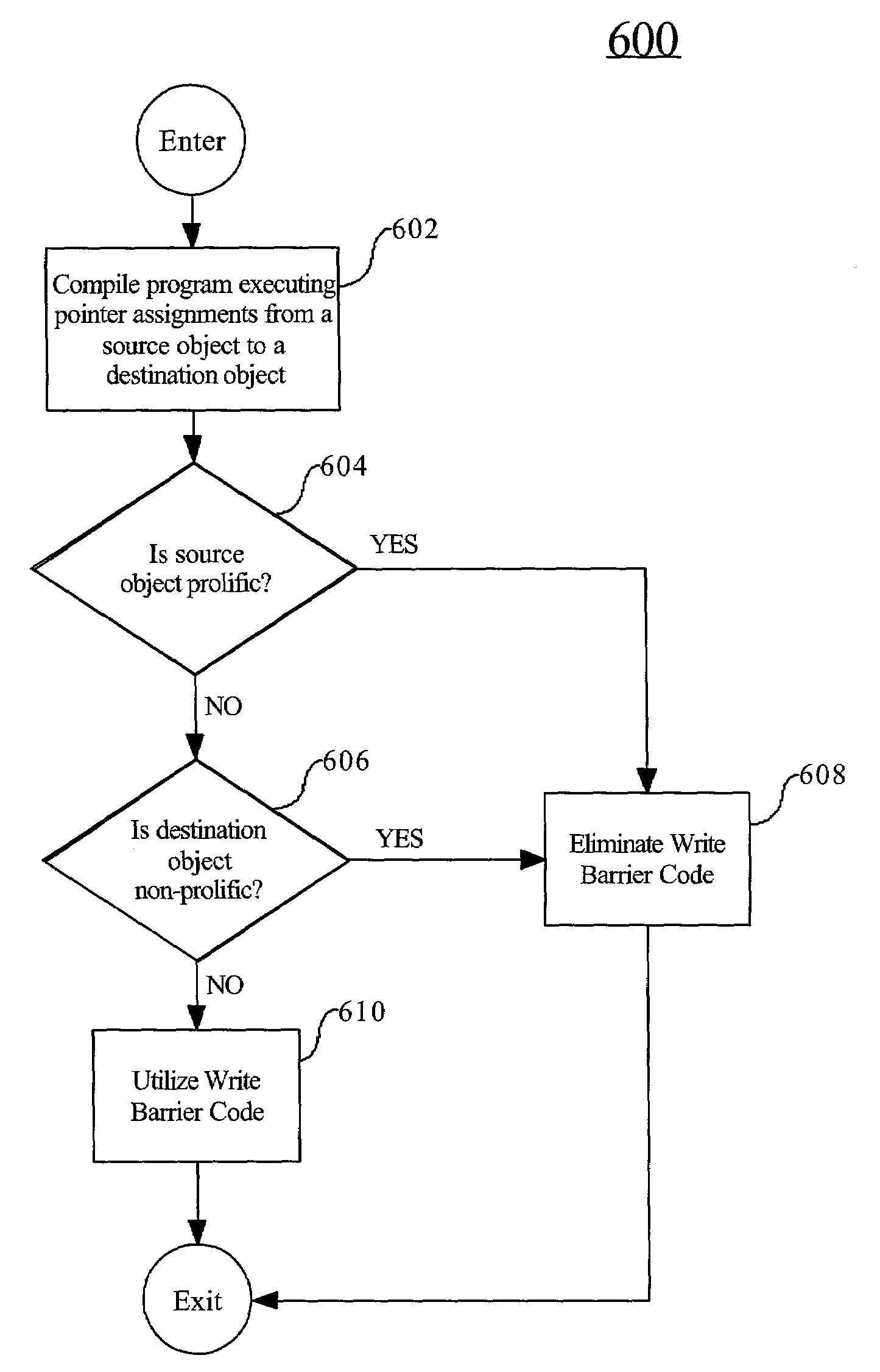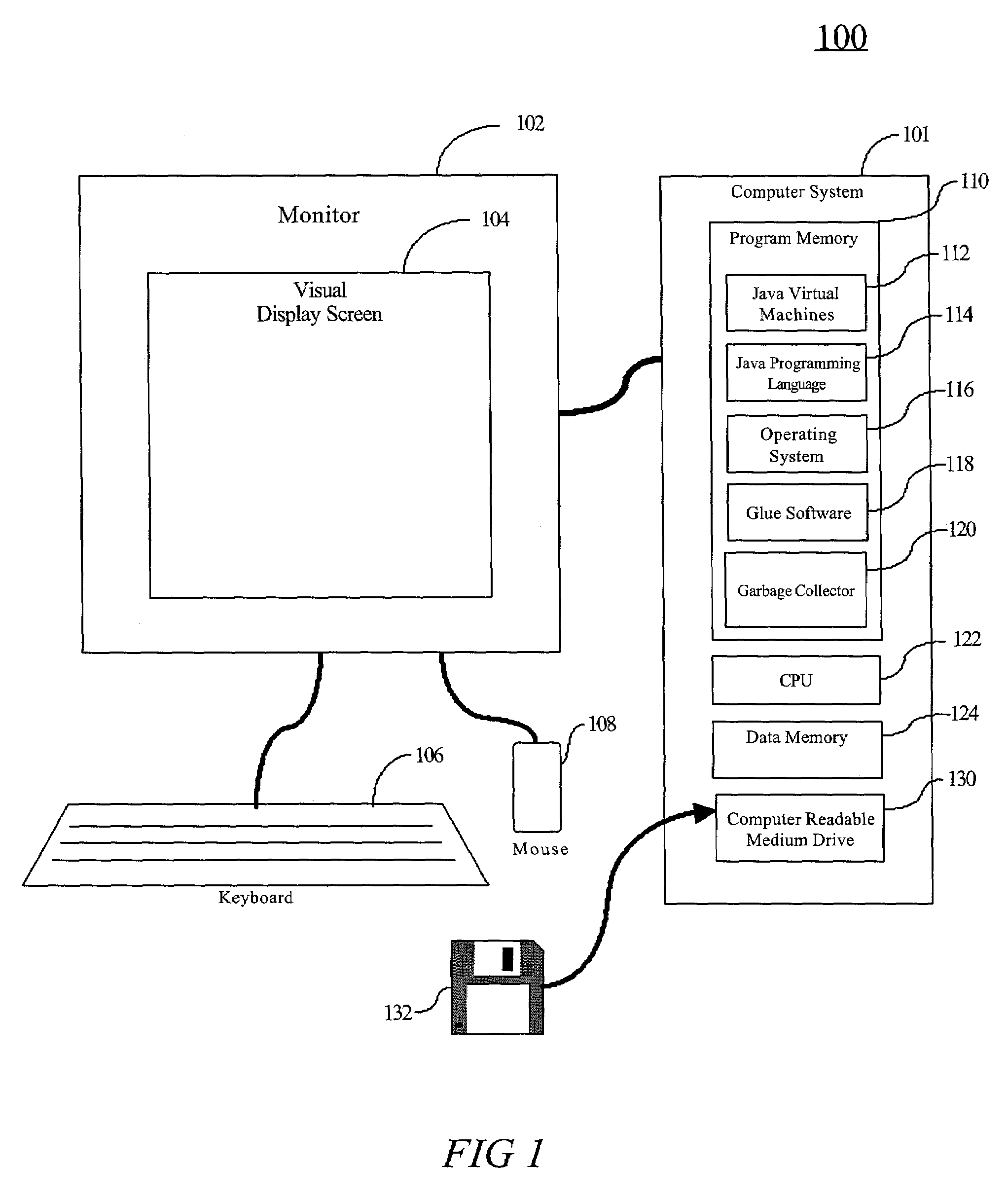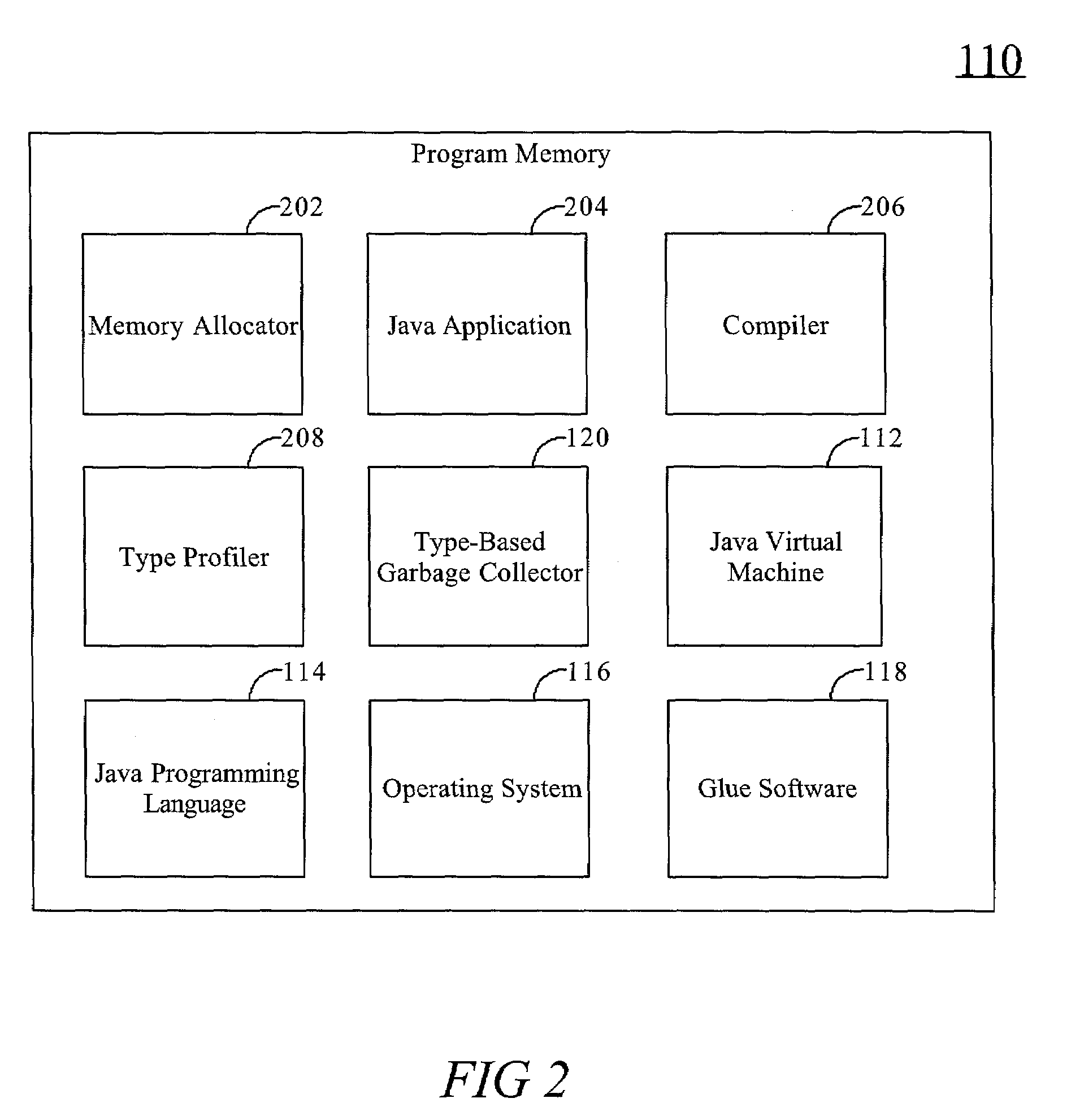Method for reducing write barrier overhead
a write barrier and overhead technology, applied in the field of automatic memory management, can solve the problems of reducing the throughput of applications, java does not provide the programmer with an explicit mechanism, etc., and achieve the effect of eliminating write barrier code and eliminating write barrier cod
- Summary
- Abstract
- Description
- Claims
- Application Information
AI Technical Summary
Benefits of technology
Problems solved by technology
Method used
Image
Examples
Embodiment Construction
[0029]The present invention, according to a preferred embodiment, overcomes problems with the prior art by implementing a new approach to garbage collection based on the notion of prolific and non-prolific object types. Relatively few object types, referred to as prolific types, usually account for a large percentage of objects (and heap space) cumulatively allocated by the program. The objects of prolific types have short lifetimes, and therefore, account for a large percentage of garbage that is collectible at various points during program execution. The present invention, according to a preferred embodiment, presents a new approach to garbage collection that relies on finding garbage primarily among prolific objects. The present invention improves upon generational garbage collection by distinguishing between groups of objects based on type rather than age.
[0030]In a preferred embodiment of a type-based garbage collector, all objects of a prolific type are assigned at allocation ...
PUM
 Login to View More
Login to View More Abstract
Description
Claims
Application Information
 Login to View More
Login to View More - R&D
- Intellectual Property
- Life Sciences
- Materials
- Tech Scout
- Unparalleled Data Quality
- Higher Quality Content
- 60% Fewer Hallucinations
Browse by: Latest US Patents, China's latest patents, Technical Efficacy Thesaurus, Application Domain, Technology Topic, Popular Technical Reports.
© 2025 PatSnap. All rights reserved.Legal|Privacy policy|Modern Slavery Act Transparency Statement|Sitemap|About US| Contact US: help@patsnap.com



